Things to do in Spain
Every country has its outstanding and special attractions. Goway has selected its Top 17 Things to Do in Spain (not in any particular order) for you to enjoy on your visit to this destination.
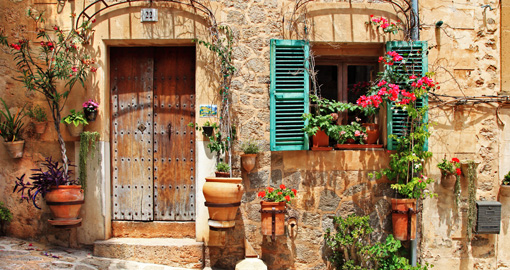
Plaza Mayor, Madrid
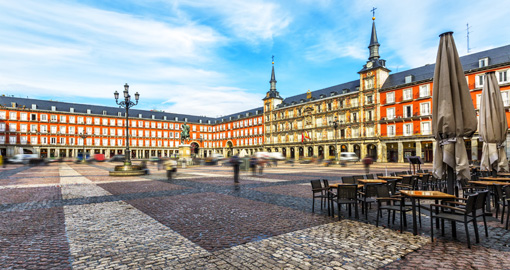
The main square in Madrid is also the city’s most attractive. The Plaza Mayor is a rectangular-shaped square and is surrounded by historical buildings. It has been called by many other names until the Spanish Civil War when it was given its current name. There are nine entrances to the square. The majority of the buildings are residential except the Casa de la Panaderia (Bakery House) which is now used for cultural events. Interestingly, buildings are no higher than 3 stories and there are 237 balconies overlooking the square. There are many arcades that surround the square that house restaurants and cafes as well as wine bars to sit at and take in the beauty of Plaza Mayor on Spain holidays.
The Prado Museum, Madrid
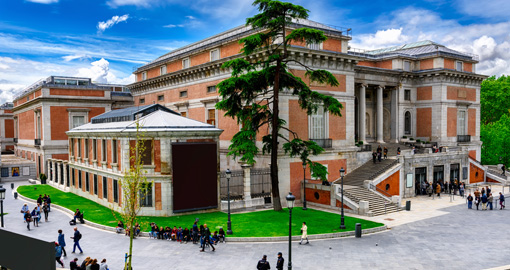
This is one of the most important art galleries in the world. The Prado has a collection of European art from the 12th to the 19th Century and specifically Spanish art. The building itself dates back to 1785 when it was designed on the orders of Charles III. This art museum has around 7,600 paintings, 1,000 sculptures and over 13,000 drawings, prints, historic documents and other works of art. Some of the highlights include a large number of Goya paintings and work by Diego, Titian, Rubens, Rembrandt, Botticelli, Van Dyck, Velazquez and Bosch.
Las Ramblas, Barcelona
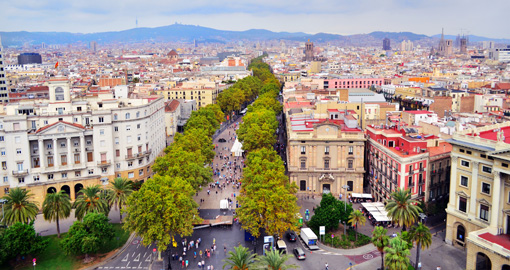
This is Barcelona's most famous street and is 1.2 kilometres/.75 miles long. The popular tree-lined pedestrian central promenade of Las Ramblas is always full of people day and night. All along the street are kiosks that sell newspapers, souvenirs and flowers. Other attractions are buskers, performers, mime artists and “living” statues plus many sidewalk cafes and bars. One notable sight is a mosaic by the modern Spanish painter, Joan Miro, a circular tile work. Another is the Font de Canaletes, a famous fountain and popular meeting point. The Spanish poet Federico García Lorca once said that Las Ramblas was "the only street in the world which I wish would never end".
La Sagrada Familia, Barcelona
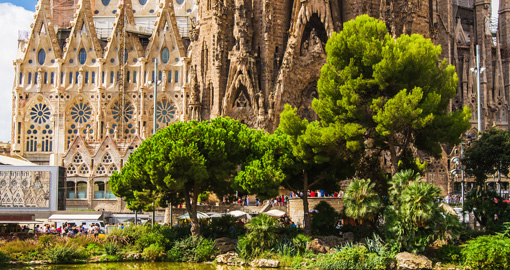
The famous architect, Antoni Gaudi has influenced Barcelona’s landscape with his whimsical architectural designs which include parks, apartment buildings and churches. His most famous architectural gem to visit on a trip to Spain is the unfinished La Sagrada Familia designed in the manner of medieval cathedrals. It is totally unique and awe-inspiring and is still under construction even after more than 130 years. It is Spain’s most visited monument attracting almost 3 million visitors annually. Gaudí devised a temple capable of seating 13,000 people. At Gaudi’s death, only the crypt, the apse walls, one portal and one tower had been finished. Three more towers were added by 1930, completing the northeast facade. The Museu Gaudí, below ground level, includes interesting material on Gaudi’s life as well as models and photos of La Sagrada Família.
The Alhambra Granada
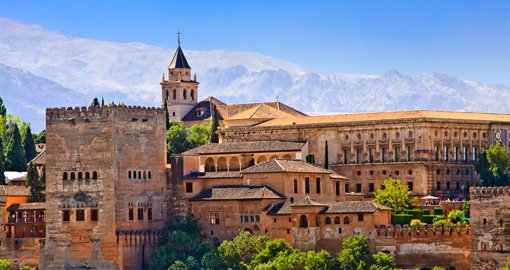
Granada was the last Muslim city to fall to the Christians in 1492. The Alhambra (translated from Arabic means Red Castle) was built in 1238 and is now a UNESCO World Heritage site. It overlooks the city from the top of a hill and is an extensive series of beautiful palaces and gardens. It has been described as a fortress, a palace and a city within a city and its architecture are simply dazzling. In the centre of the Alhambra is the immensely large Palace of Charles V, a magnificent example of Spanish Renaissance architecture. The complex of buildings called the Nasrid Palaces was the residence of the Kings of Granada. The domed ceiling stands out with its more than 8000 cedar pieces which, with its star pattern, represent the seven heavens. Adjacent to the Alhambra is the Generalife which translates as “Garden of Paradise” and is a series of beautifully laid-out gardens containing courtyards, archways, pathways, pools, fountains, waterfalls and flowers. Check out the 700-year-old cypress tree. The Generalife Gardens are a UNESCO World Heritage site in their own right. Inside the Alhambra is the Museo de la Alhambra which has a collection of artifacts relating to the building.
The Mezquita, Cordoba
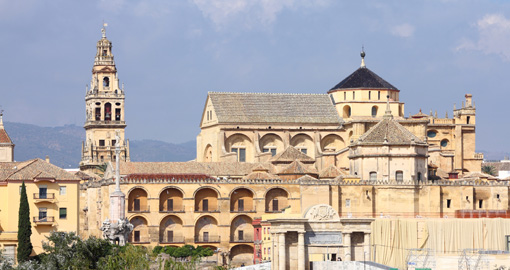
This is Cordoba’s beautiful great mosque with its serene and spacious interior. It is one of the world's greatest works of Islamic architecture built in a time when Muslims, Jews and Christians all lived side by side and enriched Cordoba with diverse cultures. It was originally a church but in 784 AD, it was developed to a greater extent and became a mosque. The Mezquita’s minaret influenced all minarets built later throughout the western Islamic world. It has a beautiful courtyard full of orange, palm and cypress trees and fountains. Following the Christian conquest of Cordoba in 1236, the Mezquita was used as a cathedral but remained largely unaltered for nearly 3 Centuries. Today, there is still controversy over whether this is a mosque or a church.
The Alcazar, Seville
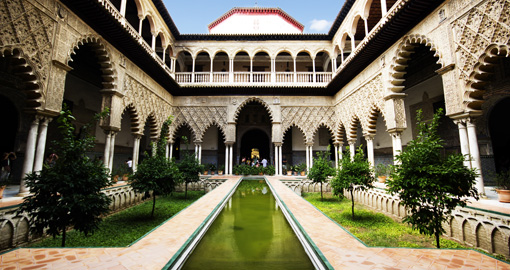
The Alcazar Palace was built initially in the 1300s and has been expanded and reconstructed many times over the centuries. Today, it is still used as a royal palace. It is an enormous complex with many rooms, magnificent halls, and courtyards all hidden behind its walls. The Alcazar is divided into sections dating through a succession of eras which include Moorish (11th-12th century), Gothic (13th century), Mudejar (14th century), and Renaissance (15th-16th century). The heart of the Alcazar features the Mudejar Palace, with its Mudejar architecture; (the Mudejars were the Moors who stayed on in Spain after the Christians took over the region). The Renaissance Palace was where Columbus signed his agreement with Queen Isabella. The gardens are truly exotic in style, with many tropical flowers on display and have both Moorish and Renaissance influences.
Toledo
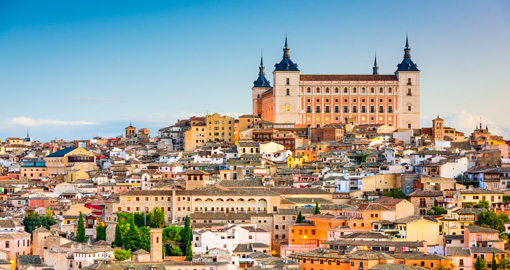
Toledo, 70 kilometres/44 miles south of Madrid, is a fortified walled city and a UNESCO World Heritage site. Located on a hill, once you step inside, it is like going back in time on a trip to Spain. It is known as the “City of the Three Cultures” because Christians, Arabs and Jews lived together here for centuries. There are churches, palaces, fortresses, mosques and synagogues. The outstanding Gothic Cathedral here, although its structure dates back to the 13th Century, was not finished until the 15th Century. Inside the Cathedral are works by well-known painters including Goya, El Greco and Van Dyck. The Mosque of Cristo de la Luz, built in 999 AD, is an unusual building as it is more or less in the same state as it was when it was originally built. The Synagogue of El Transito is a historic building and has been compared to the Alcazar in Seville and the Alhambra Palace in Granada. The Alcazar here is a huge and impressive stone fortification located in the highest part of the city. The house of the painter, El Greco is also a museum which contains exhibits of some of his greatest works.
The Salvador Dali Museum, Figueres
If you like whimsy with your art on the Spain holidays, head to this wonderful and innovative building. Dali was the master of surrealism and the exhibits here are wide-ranging and some, simply weird. Someone called this a ‘theatre-museum’ which is apt for this trip through the incredibly fertile imagination of one of the great showmen of the 20th Century. It is full of surprises, tricks and illusions and contains a substantial portion of Dali’s life’s work. The mood is set the moment you arrive outside as above the entrance are medieval suits of armour balancing baguettes on their heads plus other bizarre sculptures. A separate entrance leads into Dali Joies, a collection of 37 jewels designed by Dali himself.
Santiago de Compostela Cathedral
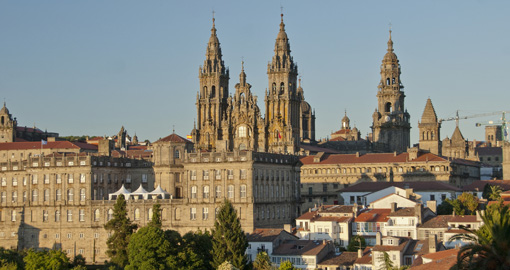
This cathedral soars above the city centre and is a splendid mixture of spires and sculptures. It was built gradually over several centuries and is a mix of an original Romanesque structure constructed between 1075 and 1211 and later Gothic and Baroque elements. The most important part of the church is the Portico de la Gloria which features 200 outstanding Romanesque sculptures. Hundreds of Christian pilgrims set off annually from various starting points with their destination being this church as the tomb of Santiago lies beneath the main altar. They come on foot, some by bicycle and a few travel on horseback or by donkey. A special pilgrims' Mass is usually celebrated at the High Altar at noon daily. For wonderful views of the cathedral's interior from its upper storeys and of the city from the cathedral roof, take a cathedral rooftop tour.
San Sebastian, Basque Country
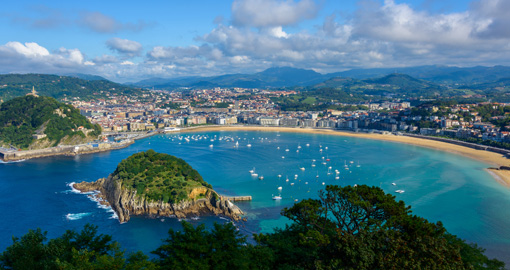
San Sebastian is a stunning and sophisticated, Internationally-renowned city and resort in the Basque region of Spain, lying in a bay with twin peaks at each end of an excellent sandy beach. The beachfront runs the length of the bay with the Old Town at one end and a modern shopping district at the other. San Sebastian has one of the best beaches in Europe, ideal for trips to Spain. It is also known as the culinary capital of Spain with around 30 Michelin-rated restaurants. The heart of the Old Town is the Plaza de la Constitution. In this colourful district, you will find numerous restaurants and bars offering the “national” snack, Pintxos to be enjoyed on a trip to Spain. There are also some lovely old churches from the 16th and 18th Centuries and a 16th Century monastery.
Guernica, Basque Country
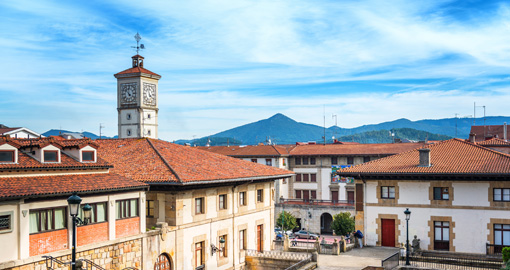
Guernica is a town on the coast and is best-known for the bombing it endured from Nazi Germany in 1937 during the Spanish Civil War when it was razed to the ground. It inspired Picasso’s famous painting of the same name. There is a reproduction of Picasso's Guernica consisting of a mosaic of tiles which shows, in puzzle form, Picasso's great work, the original of which is currently on display at the Reina Sofia Museum in Madrid. The Biscayan Assembly building and the Tree of Guernica both survived and offer an insight into the history of the Basque people such as the Basque independence movement.
The Guggenheim Museum, Bilbao, Basque Country
This museum is one of modern architecture's most iconic buildings to be experienced on a trip to Spain. There is no doubt the Guggenheim Museum is one of modern architecture's most outstanding buildings. Designed by Fran Gehry, this shining edifice, made of titanium, cannot be missed with its riverside location. The gleaming titanium tiles that sheathe most of the building are said to have been inspired by the architect’s childhood fascination with fish. Immediately outside is the whimsical puppy designed by Jeff Koons. It is a 12-metre/37-foot-tall Highland Terrier made up of thousands of begonias. The museum hosts many temporary exhibitions of modern art and design.
Spain’s Beaches
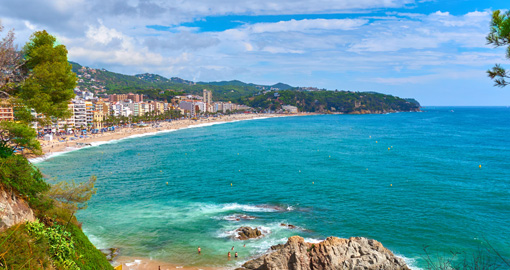
Very few countries can boast that they have such a large selection of beaches as Spain. The principal beach destinations on Spain holidays include the following. The Costa del Sol on the south coast is aptly named as the climate varies from mild in the winter to hot in the summer. It stretches 160 kilometres/100 miles. Resorts vary from touristy to quaint. For golfers, this is a haven as the region has the highest concentration of world-class golf courses in Spain – more than 60. Marbella is probably the best-known resort on the Costa del Sol due to its reputation for elegance and style reflected in its attraction to the rich and famous. The Costa Brava is located in the northeast of the Mediterranean Sea, stretching 300 kilometres/180 miles from due north of Barcelona to as far as the French border. It is an area of natural beauty with excellent sandy beaches and a mountainous backdrop perfect for a holiday in Spain or an extension to a stay in Barcelona. The coastline will surprise you with the beauty of its superb beaches. The Balearic Islands lie off the southeast coast of Spain in the Mediterranean Sea and comprise Mallorca, Minorca, Ibiza and Formentera plus a number of minor islands. All four of the principal islands are very much geared to tourism but each has its own style and character on a trip to Spain. Mallorca is the largest and best-known island. The capital, Palma de Mallorca has historical and cultural attractions. There are some excellent beaches which are close to the town. Other beaches can be found along the island’s 550-kilometre/345-mile coastline with small coves set between cliffs and pine groves in the north of the island. The inland portion of Mallorca is truly scenic and in parts, is very mountainous. The Canary Islands are located 100 kilometres/62 miles west of the North African coast opposite Morocco in the Atlantic Ocean. Due to their position, they offer a subtropical climate with hot summers and warm winters perfect for a Spain holiday. The principal islands are Tenerife, Gran Canaria, Lanzarote and Fuerteventura. Tenerife is the largest of the Canary Islands and is the most contrasting on a trip to Spain. Not only does it have beaches but it has an amazing hinterland. The beaches, interestingly, are affected by the volcanic aspects of the island resulting in black sand beaches. Gran Canaria has stunning landscapes plus peaceful coves and beaches in the south of the island contrasting with the more commercial and popular tourist areas such as Las Palmas de Gran Canaria which has some historic neighbourhoods, an interesting cathedral and some colonial architecture from the 15th and 16th Centuries.
The Wine Regions of Spain
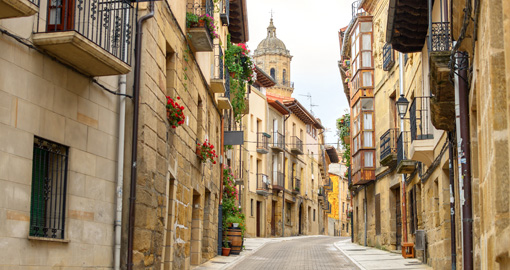
Spain can healthily compete with France and Italy when it comes to quality wines. There are many wine-producing regions which are spread out all over the country. Two of the most important are The Rioja region and the Jerez region. Rioja is one of the best-known wine types in Spain. This region is located in the north-central area of the country. It is rich in history having been invaded by the Phoenicians Romans, Moors and the Crusaders. Ancient sites of Roman wineries still exist in and around the area today. Sherry is synonymous with Spain. This fortified wine is produced in the far southwest corner of the country in Jerez de la Frontera, Sanlucar de Barrameda and El Puerto de Santa Maria. Sherry has been produced in a range of styles since the 1600s.
The Flamenco
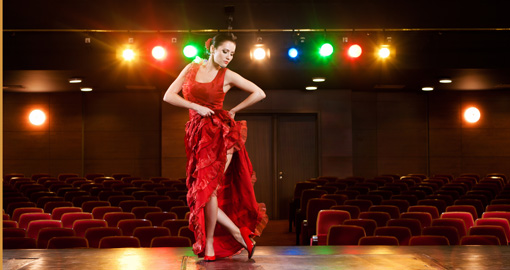
When in Spain, flamenco is a major entertainment. This combination of Latin, Gipsy and Jewish influences and traditions is more than music; it is a folk art involving singing, dance and guitar and rhythm accompaniment. It originated in Andalusia many centuries ago. There are daily flamenco shows in Madrid, Barcelona and Andalusian cities such as Seville, Granada, Cordoba and Malaga and there are flamenco festivals which take place annually in Barcelona in July and August, Madrid in June, Cordoba in July and Granada in June/July.
Bullfights
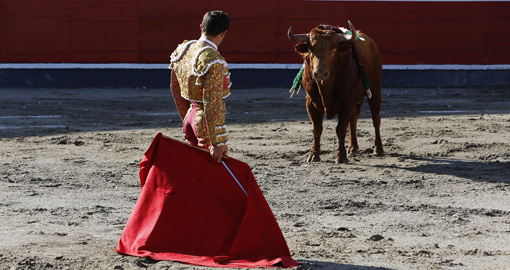
Bullfighting is another tradition in Spain. It is not for everyone on a Spain holiday. It can be bloody and violent. For the most part, the bullfighting season in Spain runs from April to September, in most major cities usually on Sundays. There are a number of bullfighting festivals throughout the season which usually run for one or two weeks. If attending a bullfight, consider buying a more expensive ticket for a seat in the shade as a bullfight can last up to 3 to 4 hours.
Get a Trip Quote Order a Brochure

















